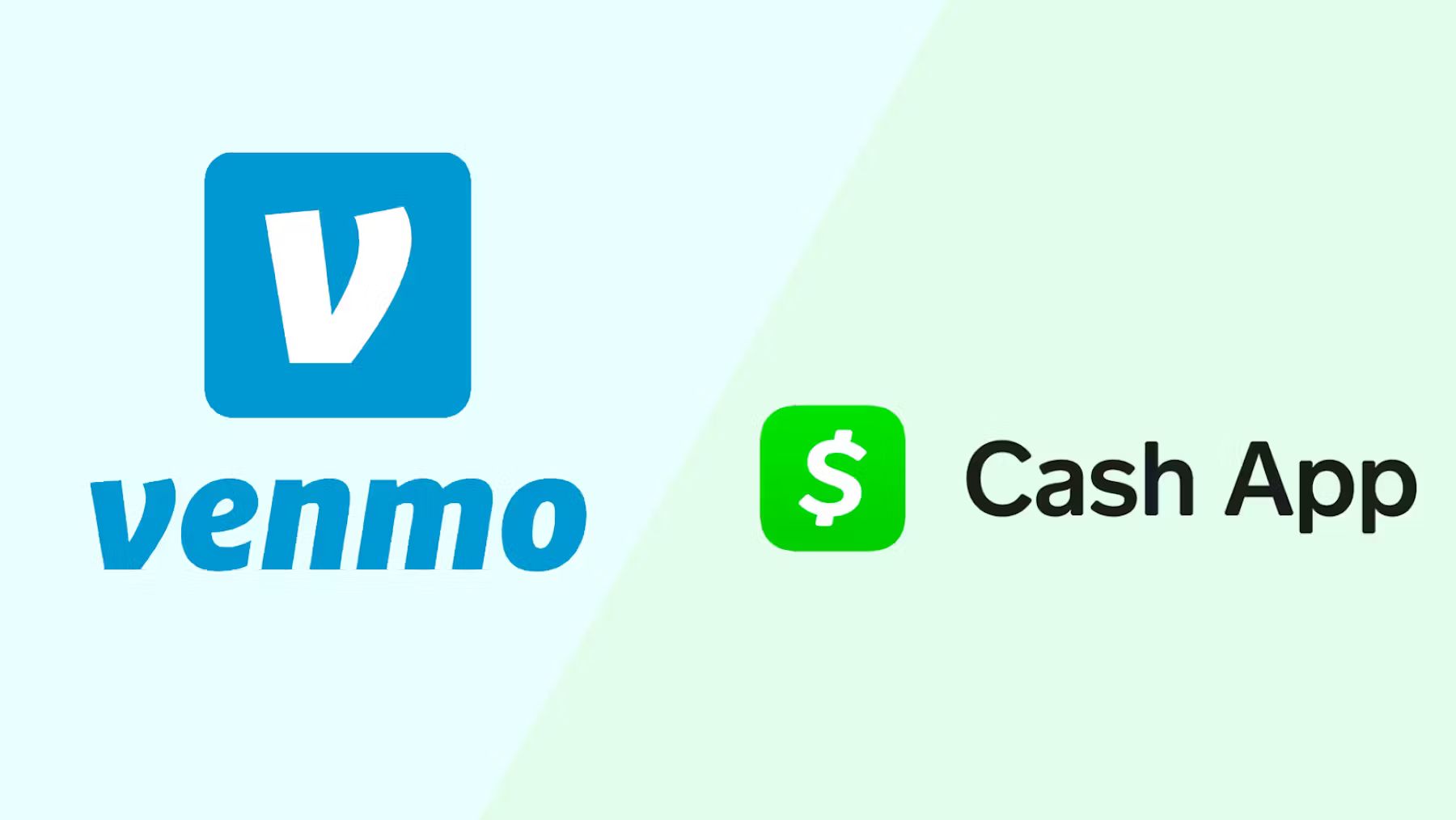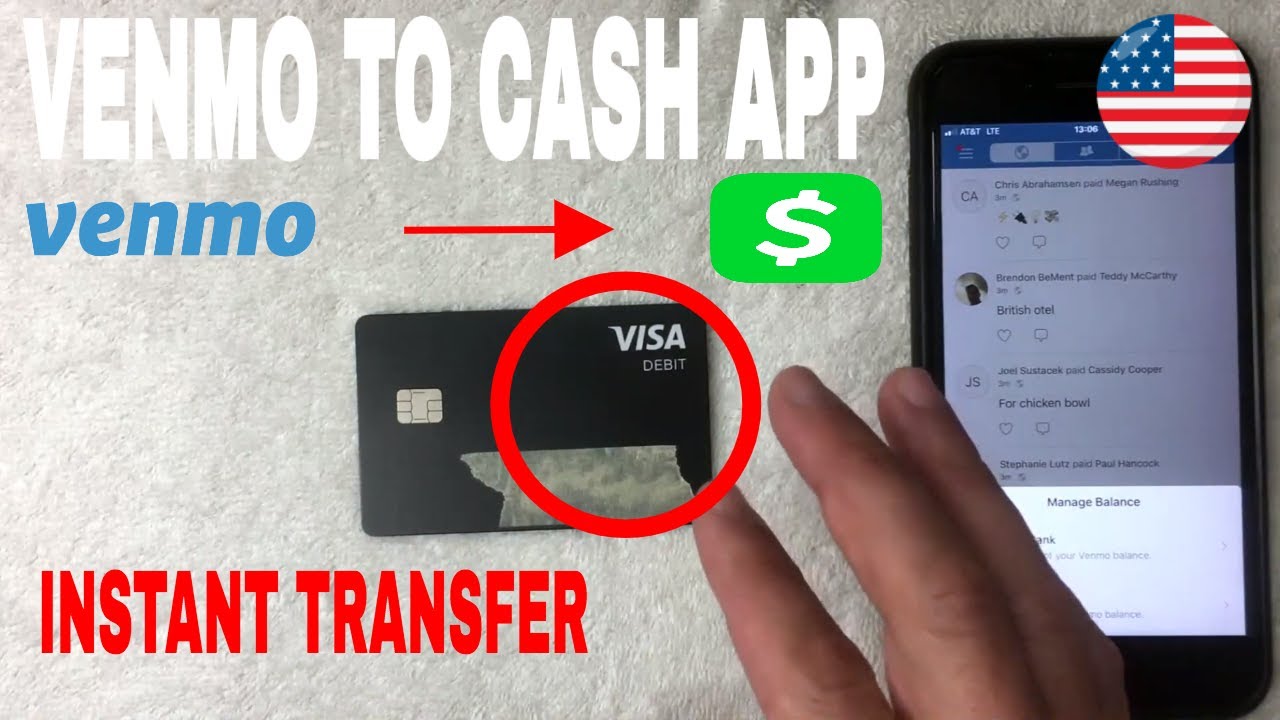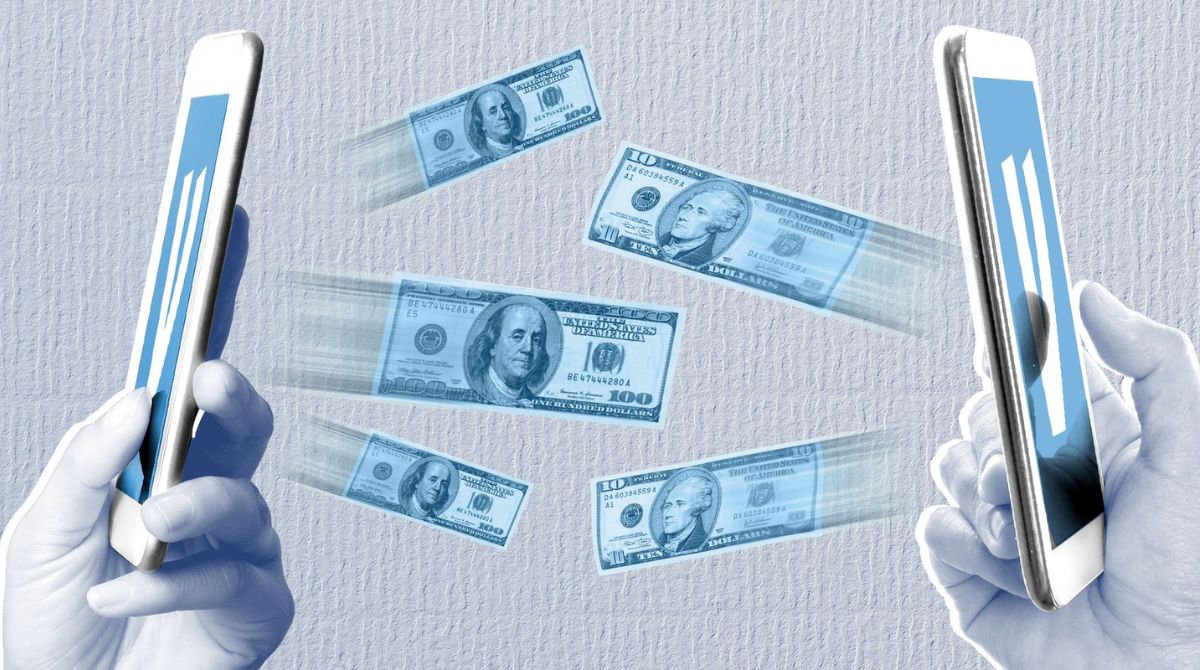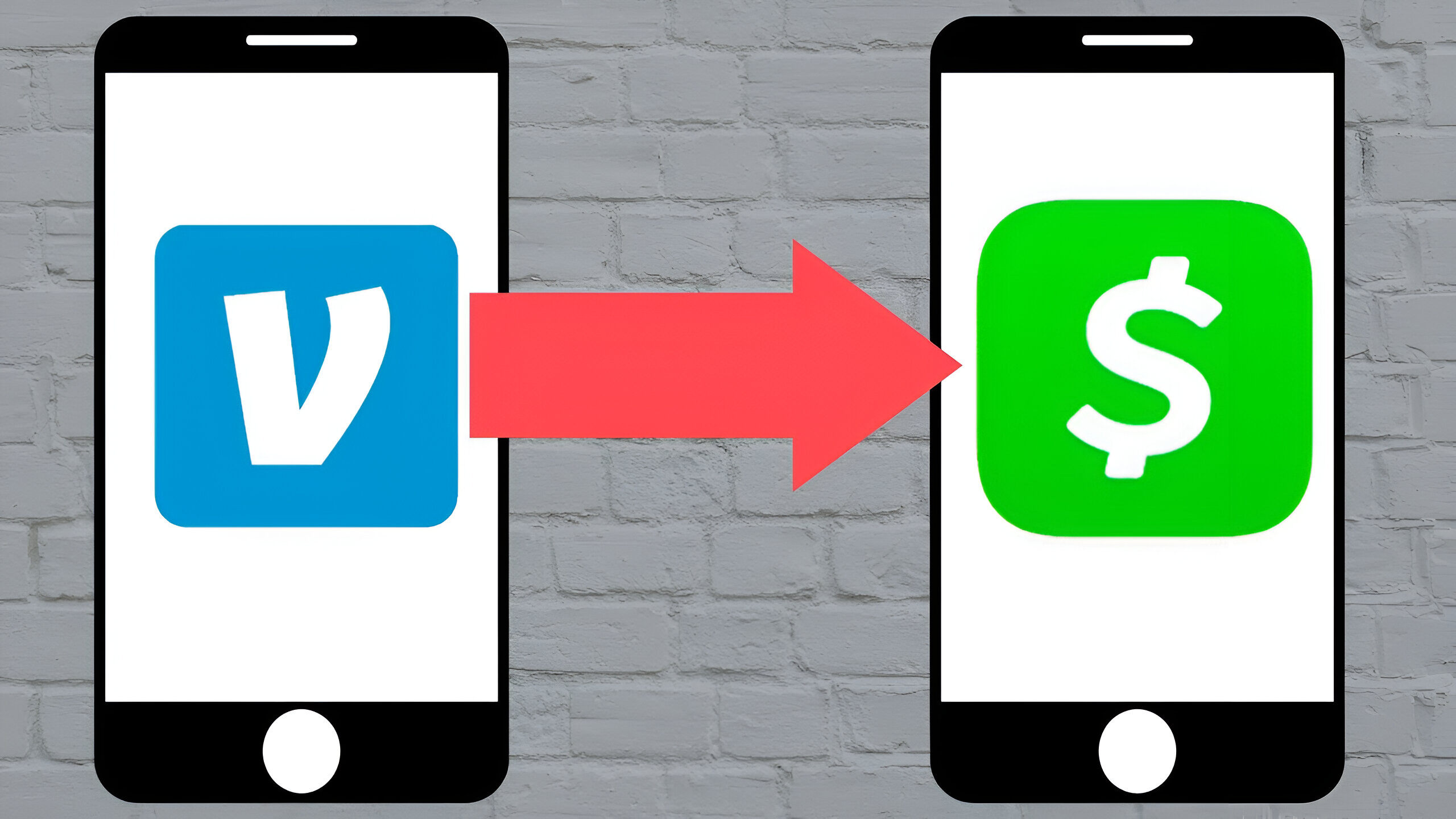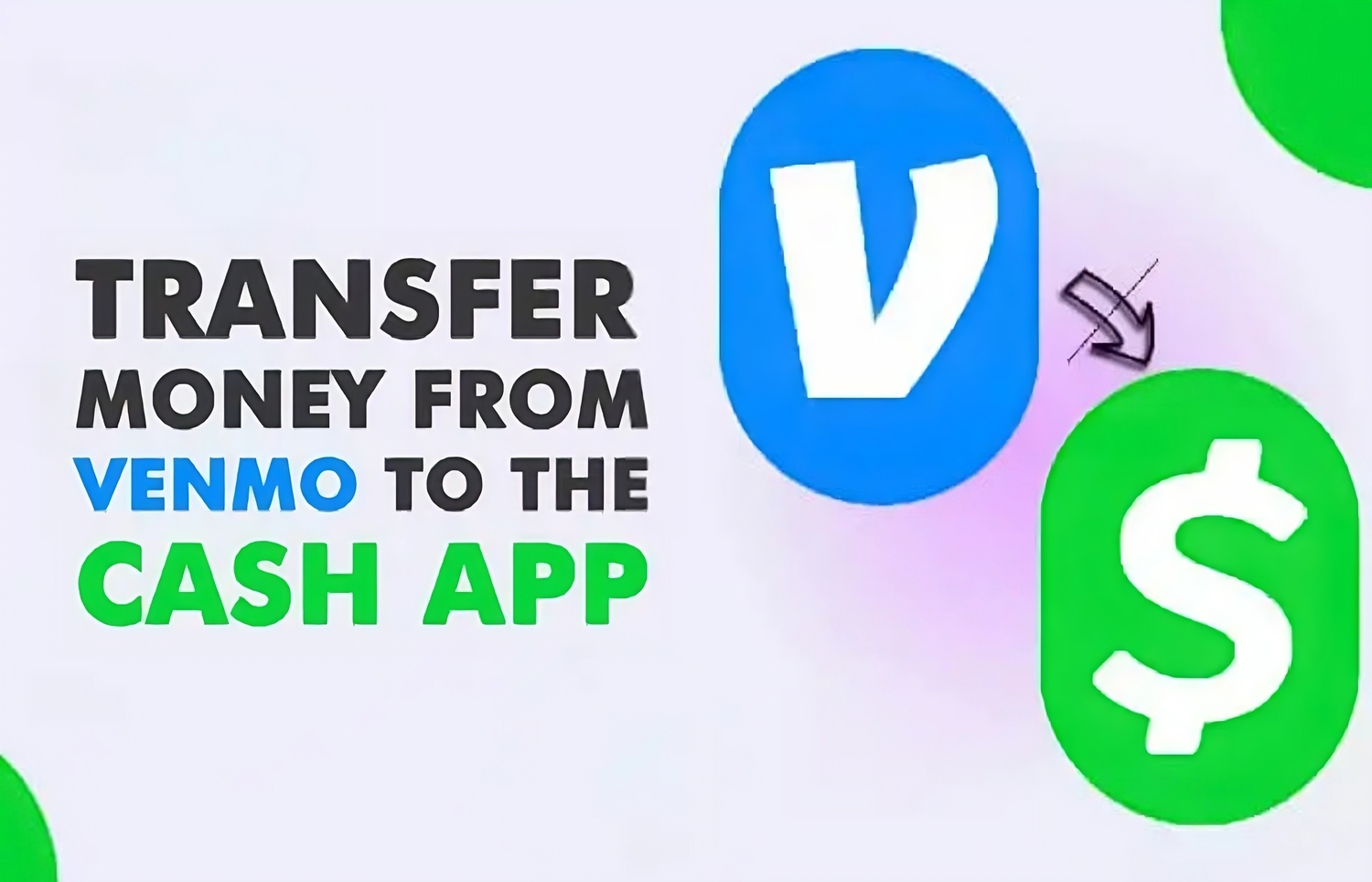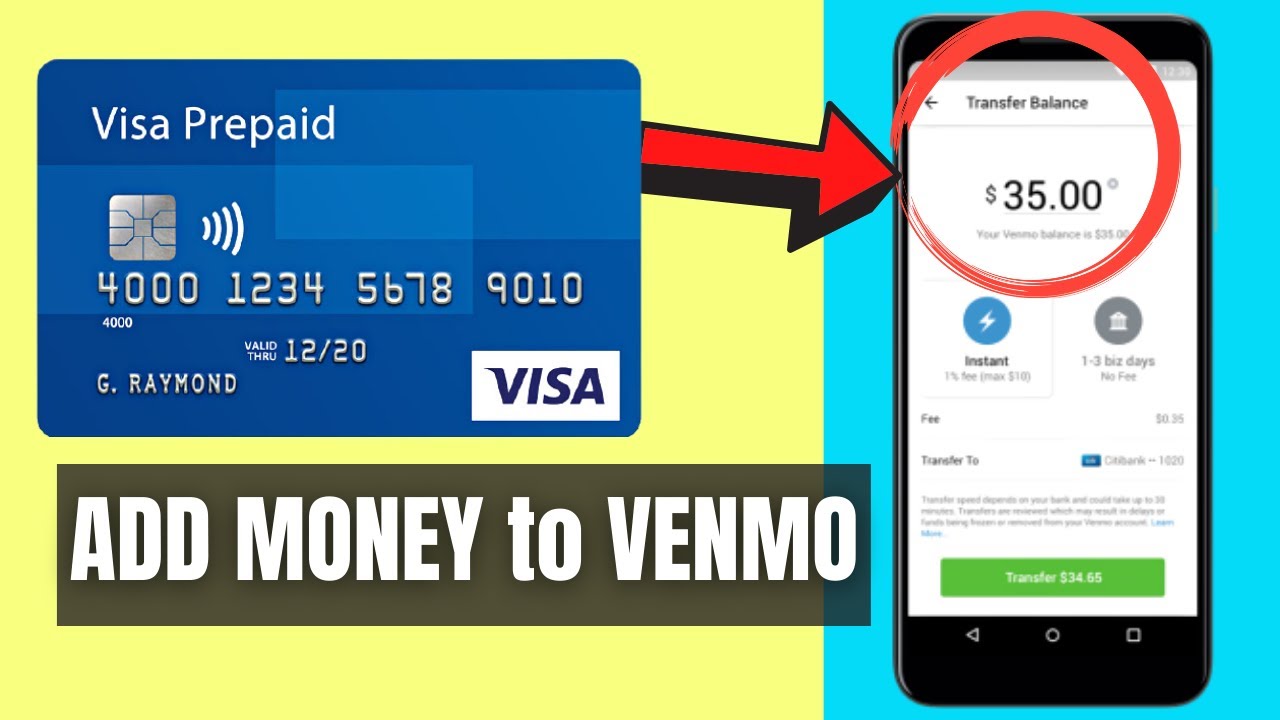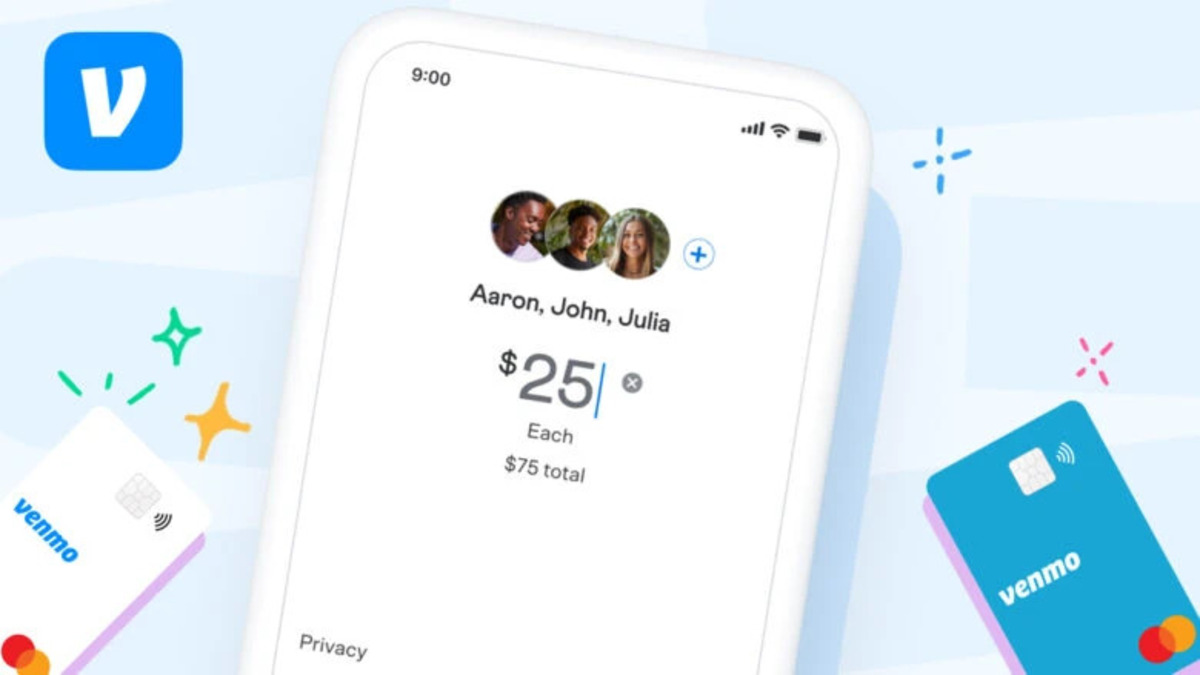Introduction
When it comes to sending and receiving money effortlessly, Cash App and Venmo have quickly become go-to platforms for millions of users worldwide. Both offer a convenient way to split bills, pay friends back, and handle other financial transactions on the go. While both apps serve the same purpose, they have distinct features and functionalities that set them apart. In this article, we will compare Cash App and Venmo in terms of ease of use, security and privacy, compatibility and accessibility, transaction limits and fees, sending and receiving money, mobile wallet and prepaid card features, customer support, and additional features.
For those seeking a simple and user-friendly interface, both Cash App and Venmo deliver. They are designed to be intuitive, making it easy for even the least tech-savvy individuals to navigate and use effectively. With a few taps, you can send or request money, split bills, and view transaction history.
When it comes to security, both Cash App and Venmo take the protection of their users’ financial information seriously. They utilize encryption technology to safeguard sensitive data and offer additional security measures such as two-factor authentication to ensure that only authorized individuals have access to the accounts.
In terms of compatibility and accessibility, Cash App and Venmo are available for both iOS and Android devices. This means that regardless of the smartphone you use, you can easily download and install either app to start making transactions. Additionally, both apps have a web version that allows users to access their accounts from a computer.
Transaction limits and fees are important factors to consider when choosing between Cash App and Venmo. Cash App has higher weekly transaction limits compared to Venmo, which can be favorable for those who frequently make large payments. However, it’s important to note that Cash App charges a fee for instant transfers, while Venmo offers free standard transfers but charges a fee for instant transfers.
When it comes to sending and receiving money, both Cash App and Venmo make it quick and convenient. You can easily send money to friends or family by linking your debit card, credit card, or bank account to the app. Splitting bills and requesting money is also a breeze with both platforms.
Ease of Use
When it comes to user-friendliness, Cash App and Venmo excel in their own ways. Cash App has a sleek and straightforward interface that allows users to navigate the app with ease. The main screen displays your balance prominently, and the various features are neatly organized in tabs, making them easily accessible. Sending and requesting money is as simple as entering the recipient’s details and the desired amount.
Venmo, on the other hand, takes a more social approach to money transfers. The app incorporates a social feed where users can like, comment, and share their payment activities with friends and contacts. This feature adds a social element to the app and can be useful for keeping track of shared expenses or splitting bills. However, some users might find this social aspect distracting or unnecessary.
Both apps offer smooth and hassle-free payment processes. Cash App allows you to send money to anyone who has a Cash App account, even if they don’t have the app installed. You can simply send the payment to their mobile number or email address, and they will receive a notification to set up their account and claim the money. Venmo, on the other hand, requires the recipient to have a Venmo account to receive payments. However, signing up for an account is quick and easy.
One key difference between Cash App and Venmo is the ability to make payments using a physical card. Cash App provides users with a free Cash Card, which is a customizable Visa debit card linked to your Cash App balance. This allows you to make payments and withdraw funds directly from your Cash App account. Venmo, on the other hand, does not offer a physical card but rather focuses on digital transactions.
Overall, both Cash App and Venmo are designed to be user-friendly, with intuitive interfaces that make money transfers quick and simple. The choice between the two will likely come down to personal preference and specific needs, such as the desire for social features or the convenience of using a physical card.
Security and Privacy
When it comes to handling financial transactions, security and privacy are of utmost importance. Cash App and Venmo have implemented measures to ensure the safety of user information and funds.
Both Cash App and Venmo use encryption technology to protect user data, ensuring that sensitive information is securely transmitted. This includes personal details, payment information, and transaction history. Additionally, both apps allow users to enable two-factor authentication, adding an extra layer of security to their accounts.
Cash App places a strong emphasis on security and offers features such as the ability to enable a PIN or use Touch ID/Face ID to access the app. This adds an extra level of protection to prevent unauthorized access to the application. Moreover, Cash App allows users to enable notifications for all account activity, allowing them to stay informed and identify any suspicious transactions.
Venmo also prioritizes the security of its users’ information. They use encryption technology for data transmission and storage, protecting personal and financial details. Venmo also offers two-factor authentication, requiring users to provide an additional verification code when logging in from a new device. This helps prevent unauthorized access even if someone obtains the user’s login credentials.
When it comes to privacy, both Cash App and Venmo have privacy settings that allow users to control who can see their transactions. You can choose to keep your transactions private or make them visible to your friends or the public. It’s important to note that while Venmo has a social feed activity feature, the app allows users to toggle their transactions to private if they do not wish to share them.
It’s worth mentioning that Cash App and Venmo have implemented fraud protection measures to detect and prevent unauthorized transactions. However, it’s always advisable for users to remain vigilant and review their transactions regularly, reporting any suspicious activity or unauthorized charges immediately.
Overall, both Cash App and Venmo take security and privacy seriously, implementing encryption, two-factor authentication, and privacy settings to protect user information. Users can feel confident that their data and funds are secure when using either platform.
Compatibility and Accessibility
When choosing a payment app, it is essential to consider the compatibility and accessibility of the platform. Cash App and Venmo are available for both iOS and Android devices, making them accessible to a wide range of users.
Both Cash App and Venmo offer dedicated mobile applications that can be downloaded from the App Store or Google Play Store. These apps provide a seamless and user-friendly experience, allowing users to easily manage their money on the go. The apps are regularly updated to ensure compatibility with the latest operating systems and devices, providing a smooth user experience.
In addition to mobile apps, both Cash App and Venmo have web-based versions accessible from desktop or laptop computers. This allows users to access their accounts and make transactions without the need for a mobile device. This compatibility makes it convenient for users who prefer to manage their finances from a larger screen or while they are working on their computers.
Another aspect of compatibility to consider is the ability to link bank accounts and debit/credit cards. Both Cash App and Venmo allow users to link multiple bank accounts and cards to their accounts, giving them flexibility in choosing the source of funds for their transactions. This compatibility makes it convenient for users who prefer to have multiple payment options.
In terms of accessibility, both Cash App and Venmo have made efforts to ensure that their apps are user-friendly and accessible for individuals with disabilities. They have implemented features such as voiceover capabilities and compatibility with screen readers, allowing visually impaired users to navigate the apps effectively.
It’s important to note that while Cash App and Venmo are widely accessible, their availability may vary by country. Before using either platform, it is essential to check if they are supported in your region.
In summary, both Cash App and Venmo are compatible with iOS and Android devices, providing users with flexibility and accessibility. In addition to mobile apps, they offer web-based versions for desktop access. The apps also support linking multiple bank accounts and cards, allowing users to choose their preferred payment options. Both platforms are designed to be user-friendly and accessible to individuals with disabilities.
Transaction Limits and Fees
Transaction limits and fees are important considerations when comparing payment platforms like Cash App and Venmo. Understanding the limits and fees associated with each app can help you make an informed decision.
Cash App has higher transaction limits compared to Venmo. With Cash App, you can send up to $7,500 per week if you have successfully verified your identity. For unverified users, the transaction limit is $250 per week. This higher limit can be advantageous for those who frequently make larger payments or need to transfer significant amounts of money.
Venmo, on the other hand, comes with default weekly transaction limits. For unverified users, the limit is set at $299.99 per week and $2,999.99 per week for verified users. These limits may be sufficient for most individuals, but if you need to make larger transactions, you may need to request an increase on the Venmo app.
When it comes to fees, both Cash App and Venmo have different approaches. Cash App charges a fee for certain transactions. For instant transfers, where the funds are available immediately, Cash App charges a 1.5% fee. However, if you are willing to wait 1-3 business days for the standard transfer, there is no fee involved. It’s important to note that these fees are subject to change, so it’s a good idea to review the current fee structure on the Cash App website or app before making a transaction.
Venmo offers free standard transfers that typically take 1-3 business days to complete. However, if you need the funds to be available instantly, Venmo offers an instant transfer option for a fee. The fee for instant transfers is 1% of the transferred amount, with a minimum fee of $0.25 and a maximum fee of $10.
Both Cash App and Venmo do not charge any fees for sending or receiving money from friends or family within the app. However, it’s worth noting that if you use a credit card to fund your transactions on either platform, there may be additional fees imposed by the credit card company.
It is important to review and understand the transaction limits and fees associated with each platform to ensure they align with your needs. Consider factors such as how frequently you make transactions, the amounts you typically transfer, and the urgency of funds availability when deciding between Cash App and Venmo.
Sending and Receiving Money
Both Cash App and Venmo provide seamless and convenient ways to send and receive money, making it easy to split bills, pay friends, and handle financial transactions with ease.
With Cash App, you can send money to anyone, even if they don’t have a Cash App account. Simply enter the recipient’s mobile number or email address, specify the desired amount, and send the payment. The recipient will receive a notification with instructions on how to set up a Cash App account to claim the funds. This feature is particularly useful when you need to send money to someone who is not already using the app.
Venmo, on the other hand, requires the recipient to have a Venmo account to receive payments. To send money, you need to search for the recipient’s username, email address, or phone number within the Venmo app. Once you find the recipient, you can enter the payment amount and provide a description for the transaction. Venmo also offers a social aspect where users can like, comment, and share their payment activities, which can add a fun and interactive element to transactions.
Both apps allow users to request money from friends or contacts. Whether it’s splitting a dinner bill or collecting money for a group gift, you can easily request funds within the app. Cash App and Venmo also provide options to send reminders to those who haven’t responded to payment requests, making it convenient to keep track of pending payments.
It’s worth noting that both Cash App and Venmo allow users to link their bank accounts, credit cards, or debit cards to their accounts. This provides flexibility in funding transactions, allowing users to choose their preferred payment method.
Another notable feature of Cash App is the Cash Card. When you sign up for Cash App, you have the option to request a free Cash Card, which is a customizable Visa debit card linked to your Cash App account. You can use the Cash Card to make purchases both online and at brick-and-mortar stores, making it convenient to access your funds.
Overall, both Cash App and Venmo offer simple and convenient ways to send and receive money. Cash App’s ability to send funds to non-users through mobile numbers or email addresses can be advantageous in certain situations. Venmo’s social feed adds a unique aspect to transactions and provides a fun way to keep track of payments among friends. Consider your specific needs and preferences when choosing between these two platforms for sending and receiving money.
Mobile Wallet and Prepaid Card Features
Both Cash App and Venmo offer mobile wallet features and prepaid card options that provide additional functionality and convenience to users.
Cash App’s mobile wallet feature allows users to store funds directly within the app. Once you link your bank account or debit card, you can add money to your Cash App balance and use it for various transactions. This gives you the flexibility to keep funds within the app instead of continuously withdrawing or transferring money from your bank account. Additionally, Cash App offers the Cash Card, a customizable Visa debit card that is linked to your Cash App balance. With the Cash Card, you can make purchases online and at physical stores, withdraw cash from ATMs, and enjoy other benefits associated with having a physical card.
Venmo, on the other hand, does not offer a mobile wallet feature. Instead, Venmo focuses primarily on facilitating peer-to-peer transactions. Users primarily utilize their linked bank accounts or credit/debit cards to fund transactions directly, without storing funds within the app. Although Venmo does not offer a dedicated prepaid card like Cash App, users can still make payments using the app and enjoy the convenience of splitting bills and paying friends easily.
It’s important to note that both Cash App and Venmo prioritize security and provide measures to protect users’ funds. They utilize encryption technology and offer options like two-factor authentication to ensure the safety of financial transactions and personal information.
When comparing mobile wallet and prepaid card features, Cash App stands out with its dedicated Cash Card. The Cash Card allows users to make purchases and withdraw cash using their Cash App balance, without needing to transfer funds to a separate bank account or rely solely on linked cards. This feature can be particularly useful for individuals who prefer to have instant access to their funds without relying on traditional banking methods.
On the other hand, Venmo offers a streamlined payment experience without the added complexity of a mobile wallet or prepaid card. Users can link their preferred payment methods directly to the app and make transactions seamlessly.
In summary, Cash App offers the convenience of a mobile wallet where funds can be stored and a dedicated Cash Card that provides additional flexibility for transactions. Venmo focuses on providing a simple and straightforward peer-to-peer payment experience, without a dedicated mobile wallet or prepaid card option. Consider your preferences and specific needs when deciding between the two platforms for mobile wallet and prepaid card features.
Customer Support and Assistance
When using any financial platform, having access to reliable customer support and assistance is crucial. Let’s compare the customer support options offered by Cash App and Venmo.
Cash App provides customer support primarily through its in-app Help Center. Users can access the Help Center by navigating to the profile section of the app and selecting the “Cash Support” or “Contact Support” options. The Help Center contains a range of articles and frequently asked questions that address common issues and provide step-by-step guidance. If users cannot find the answers they need, they can submit a support request via email. Cash App aims to respond to customer support inquiries promptly, typically within 24 to 48 hours.
Venmo, much like Cash App, offers a Help Center accessible from within the app. Within the Help Center, users can browse through articles covering various topics, including account verification, security, and transaction troubleshooting. Venmo also provides a “Contact Us” form for users to submit specific inquiries or issues that are not addressed in the Help Center. The Venmo support team responds to customer inquiries via email, typically within a similar timeframe to Cash App.
Both platforms emphasize self-help resources through their extensive Help Centers, which can be beneficial for users who prefer to find answers to their questions independently. However, it’s worth noting that neither Cash App nor Venmo offers direct phone support or live chat options, which may be a drawback for individuals who prefer immediate assistance or real-time communication.
If you are in need of urgent assistance or suspect fraudulent activity on your account, both Cash App and Venmo provide options to report issues directly through the app. Cash App users can access the “Something Else” category in the Help Center and report the specific issue they are experiencing. Similarly, Venmo users can report suspicious activity by visiting the “More” tab in the app and selecting the “Bugs & Product Feedback” option.
It’s important to remember that when using any financial service, it’s recommended to review the available support options and understand the platform’s policies and procedures in case any issues arise. Both Cash App and Venmo strive to provide responsive customer support and assistance, primarily through their in-app Help Centers and email-based support systems.
Additional Features
When comparing Cash App and Venmo, it’s important to consider any additional features that may set them apart and enhance the overall user experience.
Cash App offers a range of additional features to complement its core payment functionalities. One notable feature is the ability to buy and sell Bitcoin directly within the app. This feature allows Cash App users to invest in cryptocurrency easily without the need for a separate wallet or exchange. Cash App also offers a Boost program where users can earn instant discounts at participating merchants by linking their Cash Card to their account. This feature can save users money on everyday purchases and is an added benefit for Cash App users.
Venmo, while primarily focused on payments, has integrated social features that add a unique and engaging aspect to the app. Users can like, comment, and share their payment activities on a social feed. This social aspect can be a fun way to interact with friends and stay updated on shared expenses. Venmo also allows users to split bills and request payments from specific individuals or groups, making it convenient for splitting expenses among friends or roommates.
Both Cash App and Venmo offer integration with popular platforms and services. For example, Cash App allows users to link their accounts to popular financial apps, such as Intuit’s QuickBooks and TurboTax, allowing for easy import and tracking of transactions. Venmo, on the other hand, allows users to make payments within certain apps and websites through its “Pay with Venmo” feature. This integration makes it seamless for users to make payments without leaving their preferred apps or websites.
It’s worth noting that both Cash App and Venmo are continually evolving and introducing new features to enhance the user experience. They regularly update their apps to improve performance, introduce new functionality, and address any issues reported by users. It’s recommended to stay updated with the latest app versions and release notes to take advantage of any new features or enhancements.
When choosing between Cash App and Venmo, consider the additional features that align with your needs and preferences. If you are interested in cryptocurrency investment or instant discounts, Cash App’s features may be more appealing. On the other hand, if you enjoy the social aspect of payments and the ability to split expenses easily, Venmo’s features may be a better fit for you.
In summary, both Cash App and Venmo offer additional features that go beyond basic payment capabilities. Cash App allows users to buy and sell Bitcoin, offers a Boost program for discounts, and integrates with financial apps. Venmo incorporates social features, simplifies bill splitting, and has integration options with select apps and websites. Consider your specific needs and preferences when evaluating these additional features.
Verdict
Choosing between Cash App and Venmo ultimately depends on your specific needs, preferences, and the features that matter most to you.
If ease of use and a simple interface are important to you, both Cash App and Venmo offer user-friendly platforms that make it easy to send and receive money. Cash App’s straightforward design and intuitive navigation can be appealing, while Venmo’s social feed and interactive payment activities may add a fun element to transactions.
In terms of security and privacy, both Cash App and Venmo prioritize the protection of user information and employ encryption technology to safeguard financial data. They also offer options for two-factor authentication to add an extra layer of security.
When it comes to transaction limits and fees, Cash App has higher weekly transaction limits, which can be advantageous for those who frequently make larger payments. However, Cash App charges fees for instant transfers, while Venmo offers free standard transfers but charges a fee for instant transfers. Consider your transaction patterns and the urgency of funds availability when evaluating these factors.
In terms of mobile wallet and prepaid card features, Cash App stands out with its dedicated Cash Card, allowing users to make purchases using their Cash App balance. Venmo, on the other hand, does not offer a mobile wallet feature, but focuses on peer-to-peer transactions without the need for a dedicated card.
When it comes to customer support and assistance, both Cash App and Venmo provide in-app Help Centers with resources and a support request feature. However, neither offers direct phone support or live chat options, which may be a consideration for individuals who prefer immediate assistance.
Additionally, both Cash App and Venmo offer additional features that differentiate them. Cash App allows users to buy and sell Bitcoin, offers discounts through its Boost program, and integrates with popular financial apps. Venmo incorporates social features, simplifies bill splitting, and has integration options with select apps and websites.
In the end, the choice between Cash App and Venmo comes down to personal preference and specific needs. It may be helpful to consider factors such as user interface, security, transaction limits and fees, mobile wallet features, customer support options, and any additional features that align with your requirements. By assessing these factors, you can make an informed decision on which platform is the best fit for your financial needs and preferences.







